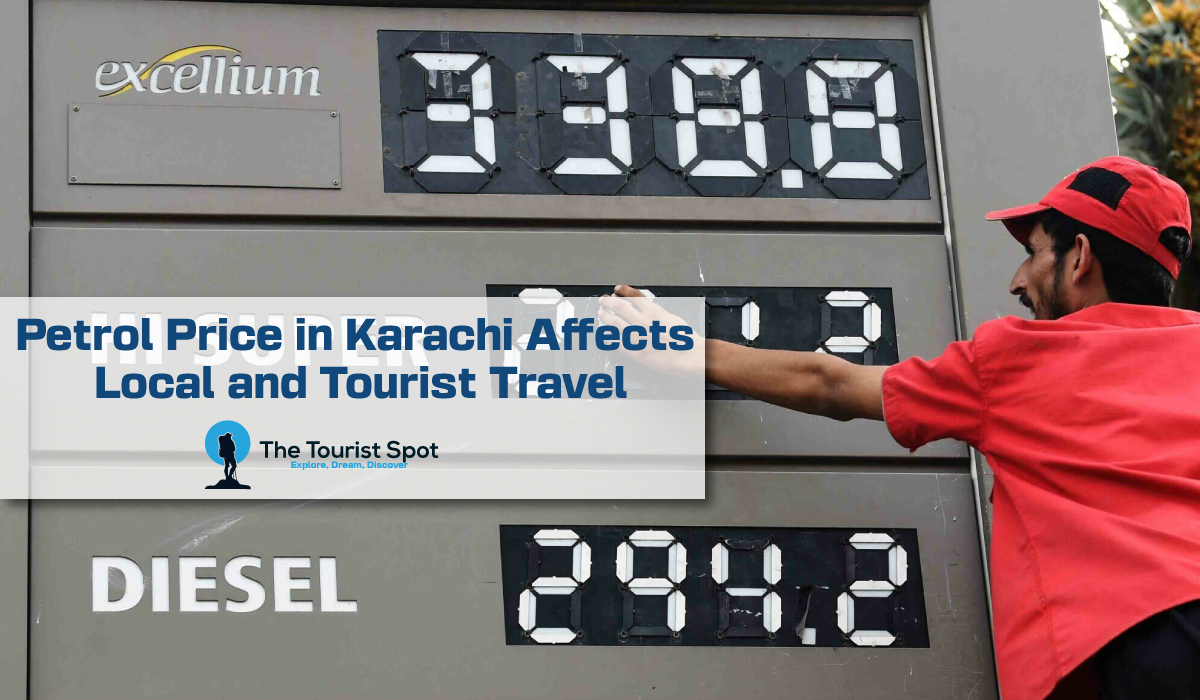The petrol price in Karachi continues to be a hot topic for both residents and tourists navigating the bustling city. As one of the most populous and dynamic cities in Pakistan, Karachi relies heavily on road transport—from rickshaws and taxis to ride-sharing services and tourist buses. Any fluctuation in petrol prices creates a ripple effect that impacts the cost of living, transportation fares, and ultimately, the travel decisions of visitors.
In 2025, frequent price hikes in petrol are affecting not just locals, but also the growing number of international tourists exploring this vibrant port city.
Local Commuters Feel the Pressure
Karachi’s massive population depends on daily commuting to earn a living. From employees taking public buses to delivery workers using motorcycles, fuel is at the heart of mobility. A spike in the petrol price in Karachi forces many locals to alter their routines—shifting to carpooling, cutting down unnecessary travel, or even switching jobs to reduce commute distances.
For working-class families, this means adjusting household budgets to accommodate higher transportation costs. Public transport providers also adjust fares to account for rising fuel expenses, putting further strain on everyday commuters.
Impact on Ride-Sharing and Public Transport
Karachi has seen significant growth in app-based ride-sharing services like Careem and inDrive. While these services provide convenience, they are also directly affected by fuel price volatility. As the petrol price in Karachi climbs, drivers raise their fares to remain profitable. This discourages regular use by passengers, especially for longer journeys within the city.
Similarly, minivans, taxis, and auto-rickshaws increase their rates to cover the added fuel costs. This can be particularly hard on students, low-income earners, and small business owners who rely on affordable public transportation.
Tourist Travel Takes a Hit
For tourists visiting Karachi, high petrol prices translate into more expensive city tours, intercity travel, and guided excursions. Sightseeing options such as beach visits, heritage tours, or trips to historical locations like Mohatta Palace and Clifton often require private transport. With the petrol price in Karachi rising, travel agencies and guides are forced to revise their packages and pricing structures.
This impacts the affordability of tourism in Karachi, especially for budget travelers. Those who planned extended stays may limit their movements, missing out on key attractions and experiences.
Increased Cost for Intercity Travelers
Karachi is also a common entry or exit point for travelers heading to other cities in Pakistan like Lahore, Islamabad, or the northern regions. Travelers using intercity buses or private cars face higher ticket prices when fuel rates rise. The long road trips, once considered economical compared to air travel, are now less attractive due to escalating petrol expenses.
Tour operators who once offered competitively priced intercity tours are now restructuring packages or shifting toward alternative energy solutions.
Small Businesses and Tourism Services Affected
Increased petrol price in Karachi doesn’t just impact transport—it influences the broader travel ecosystem. Guesthouses, hostels, travel agents, and food vendors all feel the effect. Delivery services, tour operators, and even boat rental companies face increased operational costs. These costs are eventually passed on to the customer, making the overall Karachi travel experience more expensive.
The added financial pressure could discourage repeat visits or negative word-of-mouth among international visitors looking for budget-friendly travel destinations.
Environmental and Behavioral Shifts
One positive aspect of rising petrol prices is the growing interest in alternative and more sustainable transport options. Some locals are opting for bicycles or electric scooters, while tourists are increasingly exploring walking tours or group transportation to share costs.
Eco-conscious travelers may now consider planning their trips with lower carbon footprints, aligning with global trends in sustainable tourism. If the petrol price in Karachi continues to rise, this shift may accelerate and promote greener urban travel habits.
Government Measures and Future Outlook
The government of Pakistan periodically intervenes by subsidizing fuel or adjusting taxes to control inflationary pressure. However, global oil prices, exchange rate volatility, and geopolitical tensions continue to influence the local fuel market.
The future outlook remains uncertain. If the petrol price in Karachi stabilizes, we may see a return to regular tourism activity and improved confidence among transport service providers. However, if prices continue to climb, both locals and tourists may have to adapt to a new norm of higher transportation costs and altered travel behavior.
Tips for Tourists Visiting Karachi Amid Fuel Price Fluctuations
- Use public transport where possible – Metro buses and minibuses offer affordable options.
- Book combined city tours – Travel packages that cover multiple destinations at once can save costs.
- Consider off-peak travel – Rates are sometimes lower on weekdays or during non-holiday periods.
- Plan accommodations near major attractions – This reduces the need for long-distance travel.
- Look for eco-friendly travel options – Explore walking tours or group trips for a budget-friendly and greener experience.
Conclusion
The fluctuating petrol price in Karachi is more than just a financial statistic—it significantly affects the lives of residents and the experiences of tourists alike. From increased transportation costs to changing travel behaviors, the impact is far-reaching.
For travelers planning to explore Karachi in 2025, staying updated on fuel trends and adjusting their itineraries accordingly can ensure a smoother and more enjoyable journey. Meanwhile, the city continues to adapt, offering new opportunities for innovation, sustainability, and smart travel solutions.

